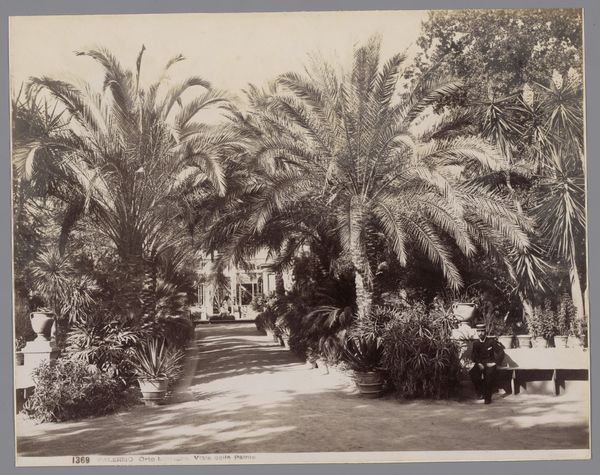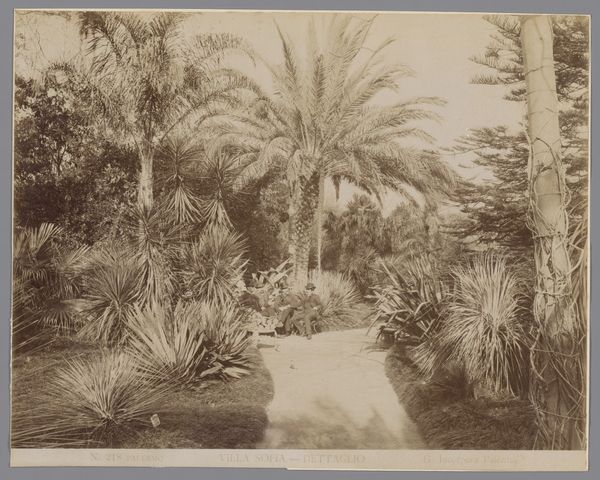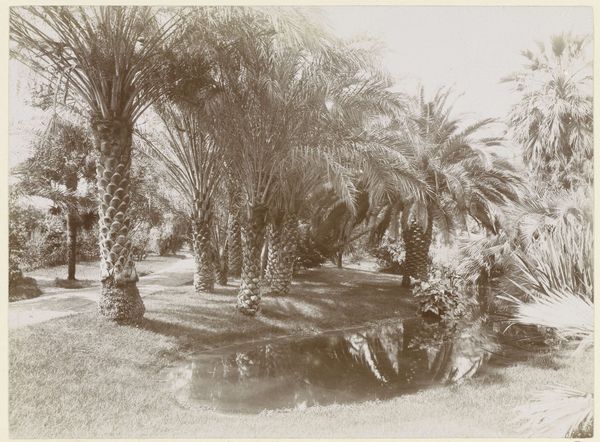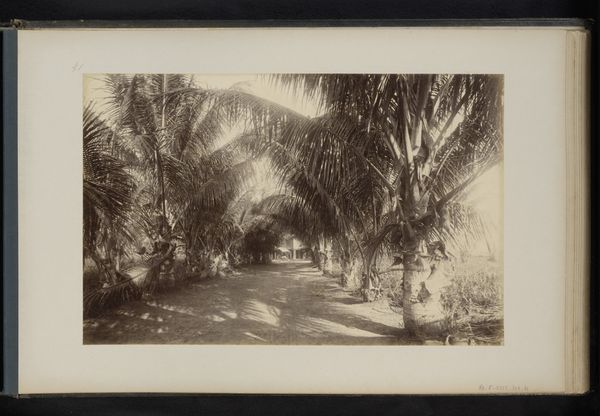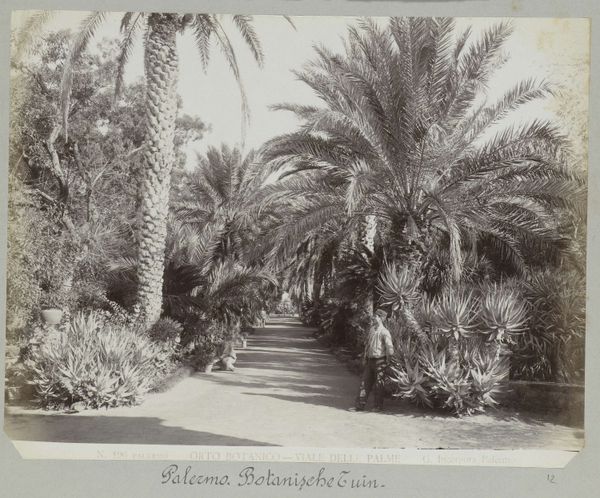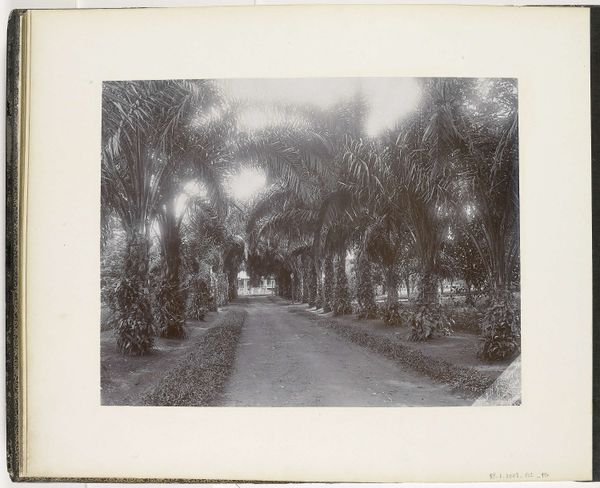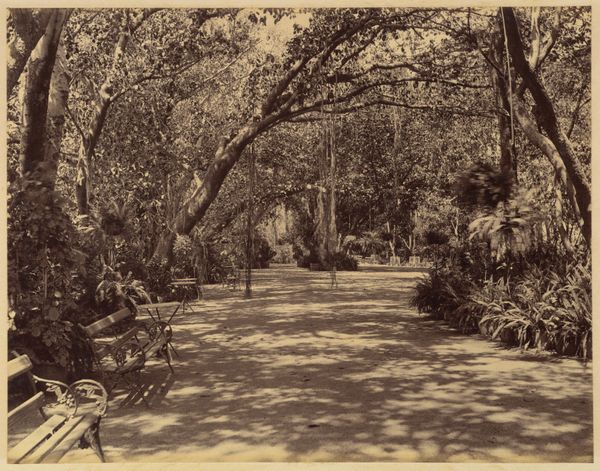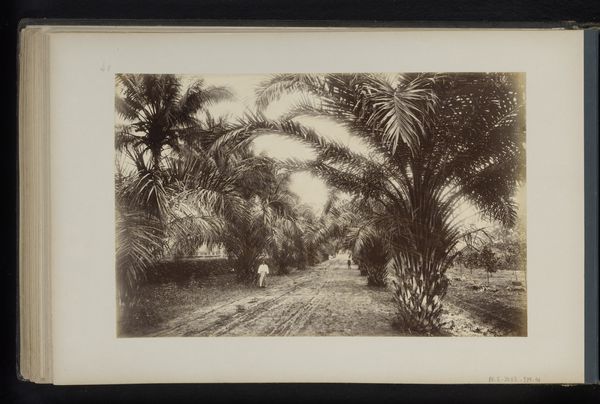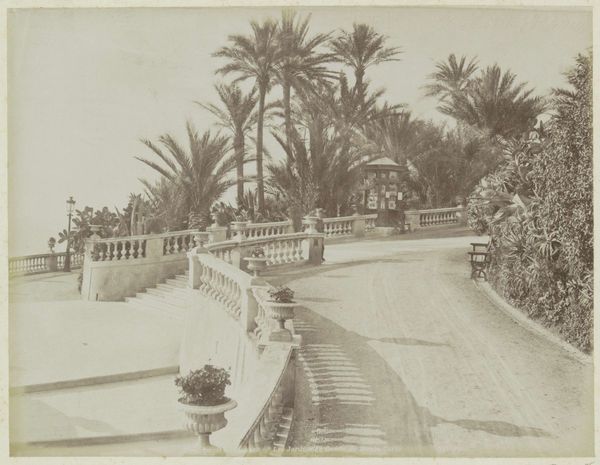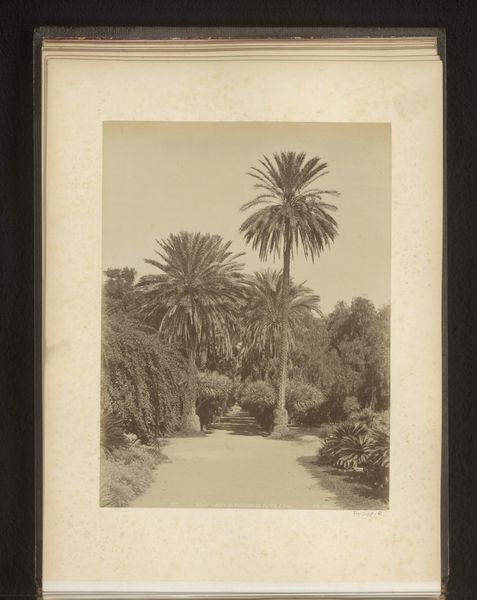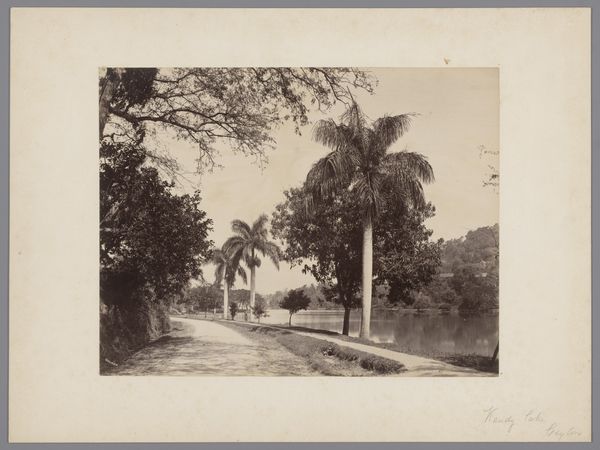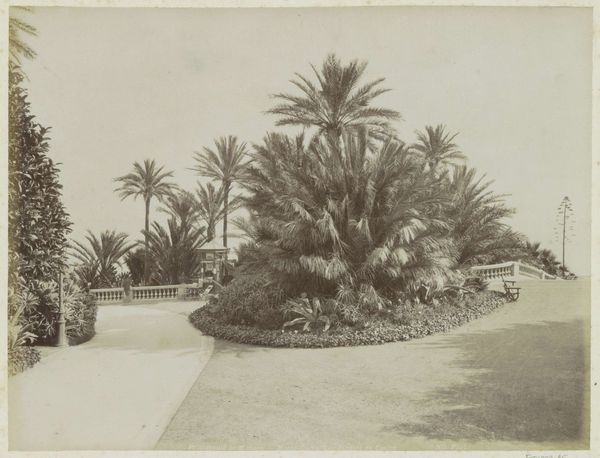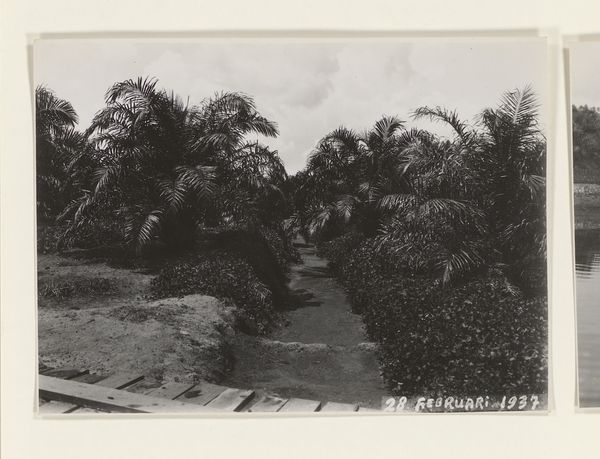
photography
#
landscape
#
photography
#
orientalism
Dimensions: height 196 mm, width 248 mm
Copyright: Rijks Museum: Open Domain
Curator: Stepping into the botanical garden as captured by Giuseppe Incorpora, some time between 1856 and 1914, reveals an alleyway lined with palms, entitled "Laan met palmen in de Orto botanico in Palermo." The very architecture of Orientalism is revealed, right? Editor: I'm struck by how repetitive and industrial the arrangement is; potted plants lining both sides, uniform palms providing shade… The path looks so groomed and structured. It almost feels like a factory that produces tropical landscape. Curator: Absolutely, that's very astute! This imagery needs to be contextualized against the backdrop of Sicilian history and its own entanglement with colonization, migration, and of course, global commerce. The way exoticism has been marketed has resulted in the exoticized becoming a commodity in and of itself. Editor: Yes, and if we look closer at the materials, photography itself becomes a tool for mass production. These images of Palermo were reproduced and widely distributed; turning a sensory and labor intensive experience of travel into easily consumable picture. Curator: That's right; there’s that duality inherent in botanical gardens: places of scientific study, certainly, but also, gardens catered to elite consumption of the exotic other; the Oriental fantasy neatly captured by Incorpora through photographic means. What’s hidden behind all this artifice is the intensive labor needed to create the scene, and even acquire all these plants! Editor: Indeed, we are never really shown the workers—only the ordered palms. It calls into question our own gaze when observing these manufactured nature scenes, as well. And while we do see it as an idealized representation today, these early photos of leisure and science contributed directly to the rise in global trade. Curator: These staged images allowed a romantic escape for wealthy Westerners that has deeper resonance that are related to power, display, control. We must remember that these gardens and photographs represent an imperial ordering. Editor: Viewing the gardens as an active part of global commodity chains, suddenly brings the reality behind them back into view, don't you think? Curator: Exactly! It makes us aware that we're looking at a specific historical narrative shaped by forces we must learn to recognize and dismantle, while the process-oriented view emphasizes the real production behind idealized aesthetics. Editor: Agreed, looking at the art from production, the commodity culture emerges to challenge romantic vision and reveals a social reality.
Comments
No comments
Be the first to comment and join the conversation on the ultimate creative platform.
